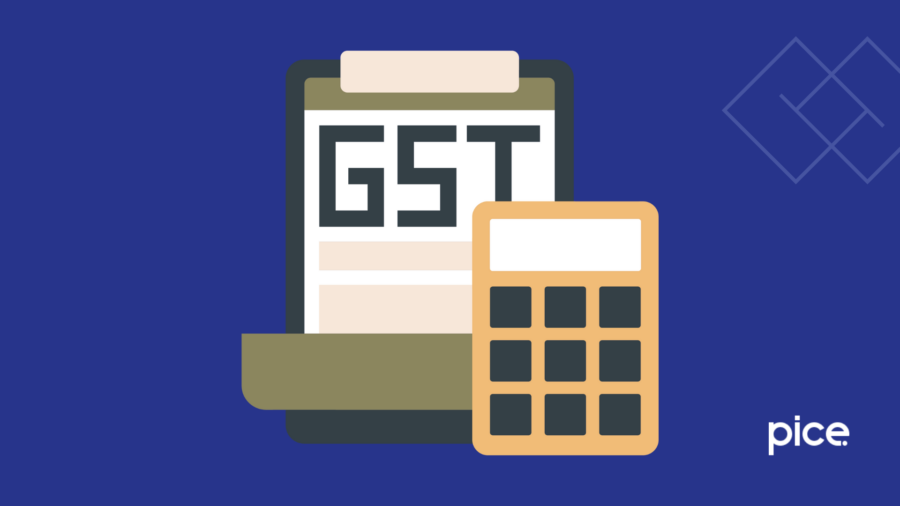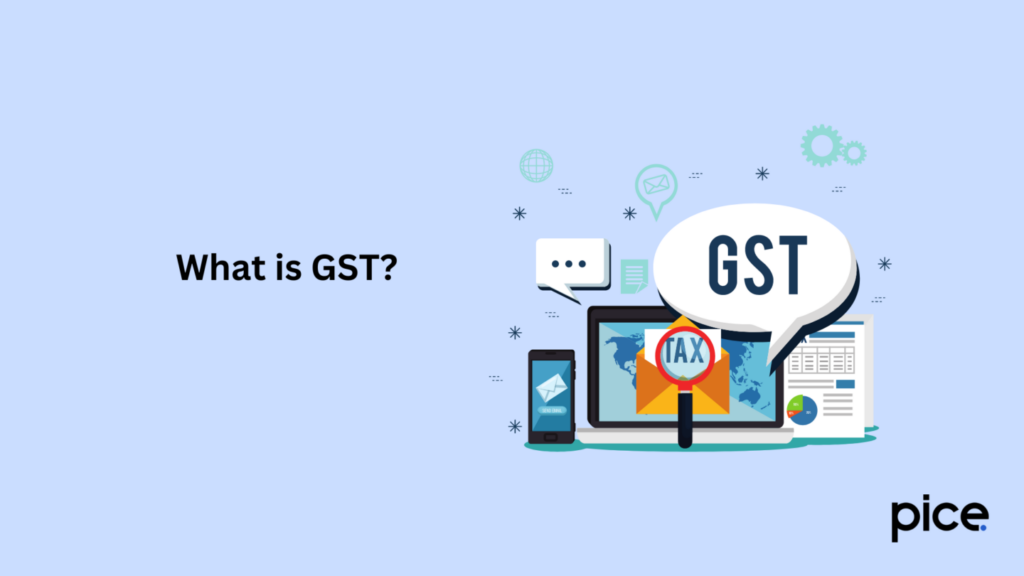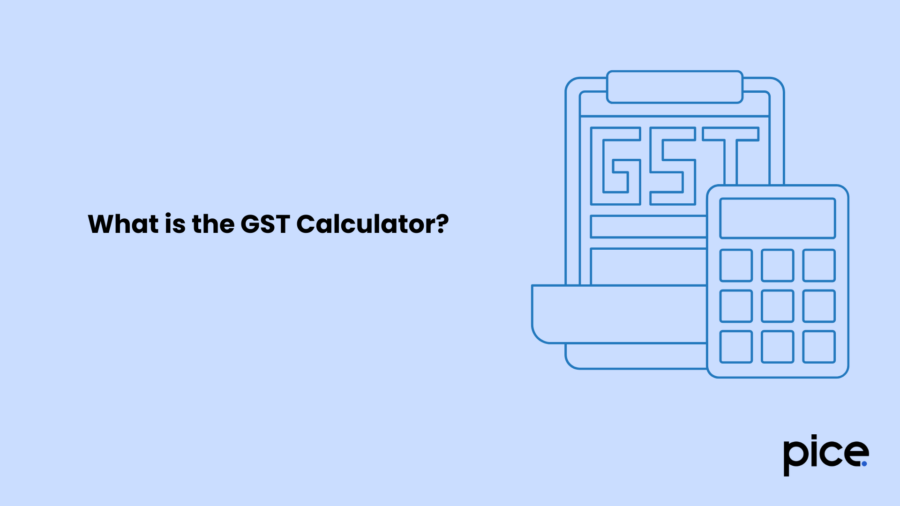How to Calculate GST: A Step-by-step Guide for Beginners
- 9 Apr 25
- 8 mins

How to Calculate GST: A Step-by-step Guide for Beginners
Key Takeaways
- GST is a unified indirect tax that replaced multiple state and central taxes to simplify the Indian tax system.
- There are four types of GST—CGST, SGST, IGST, and UTGST—depending on the nature of the transaction.
- GST is calculated using standard formulas to add or remove tax from the product price for transparency and accuracy.
- The Pice GST calculator makes GST computation effortless, saving time and reducing errors for individuals and businesses.
- GST helps in better compliance, informed financial decisions, and smoother business operations.
GST, or the Goods and Services Tax, is an indirect tax levied on goods and services across the country. This comprehensive, destination-based tax has replaced several other indirect taxes, eliminating much confusion otherwise traced through the complex taxation system. The GST system, as a whole, has boosted transparency while fueling efficiency and clarity.
The introduction of GST in India has played a crucial role in transforming the tax collection method, making it an important topic. This blog will explain how to calculate GST, the formula to be used, examples, and other details.
What is GST?

GST is the abbreviated form for the Goods and Services Tax. This indirect tax has replaced other indirect taxes in our country, including the services tax, VAT, and excise duty. Passed in Parliament on March 29, 2017, the Goods and Service Tax Act took effect on July 1, 2017.
Goods and Service Tax (GST) is charged on goods and services supplied. The applicable tax rate law in India is multi-stage, comprehensive, and destination-based. GST is levied on any and every value addition. By subsuming the majority of indirect taxes, GST has become a singular domestic indirect tax law that the entire country abides by.
Here are the State and Central indirect taxes merged by the GST:
| Central Taxes | State Taxes |
| ● Central sales tax ● Central excise duty ● Excise duty charged under the textile products ● Service tax ● Additional duties of excise ● Additional duties of customs | ● Entry Tax ● Purchase tax ● VAT ● Taxes on gambling, betting and lottery ● Surcharge & Cess ● Taxes on advertisements ● Entertainment Tax ● Luxury Tax |
The GST has wholly transformed the complex taxation landscape into an easily comprehensible one. It is a game-changer against the backdrop of the world of taxes, a superhero that has rescued the system and made tax-related matters seamlessly understandable for all.
The GST is the 'boss' of all taxes in our country. It applies to the goods and services for local use, thus creating a united tax ecosystem. Not only does GST simplify, but it also makes compliance and processes easier for tax authorities and enterprises.
Therefore, such entities are empowered to navigate the tax system's complexity smoothly, come down to informed financial decisions, and ensure compliance in the process - all in the country's inevitably evolving economic landscape.
However, it is also essential to note that the varying tax slabs confuse within the system, but nothing that cannot be overcome.
Types of GST
There are four main types of GST in India, the knowledge of which is crucial to prompting accurate tax calculations, proper invoicing and accounting, compliance with GST laws, and avoidance of double taxation. All of these shall simultaneously allow for seamless business operations.
Here are the 4 types of GST in our country:
- SGST (State Goods and Services Tax): The state government collects the SGST tax on intrastate transactions within the same state and retains the collected revenue.
- CGST (Central Goods and Services Tax): The Central Government collects the CGST tax on intrastate transactions. It is typically split equally with the SGST, including a 9% CGST and 9% SGST on an 18% GST charge.
- IGST (Integrated Goods and Services Tax): The IGST tax is levied on interstate sales of goods and/or services. The central government collects it. IGST applies to transactions between different states.
- UTGST (Union Territory Goods and Services Tax): Another GST component, the UTGST tax, is charged on the supply of goods and/or services within the UTs of India. The Union Territory Government collects the revenue.
The GST/tax rate applicable for various goods and services remains consistent across the country. This is identified by the HSN and SAC, respectively. However, the GST application method may only differ according to the interstate (IGST)/intrastate supply (i.e. CGST + SGST).
What is the GST Calculator?

The GST calculator is an online tool for determining the payable Goods and Services Tax (GST) amount applicable to a particular product.
Whether you purchase a product or a service is taxable under the GST laws. It is advantageous for you to know how much tax you will be paying for the items/services you avail of for more transparency with transactions. This is where the GST calculator comes into play. Here are the pros of using a GST calculator:
- The GST tax calculator will provide a precise estimate of the tax amount you must pay.
- This online tool will save you time otherwise spent manually calculating the GST amount.
- The calculator will minimise the scope of any fraudulent activities. Being an informed consumer who knows their taxes cannot be duped easily.
How to Calculate GST?
The calculator requires you to enter the cost and the GST rate applicable. It will then compute the GST amount automatically. This readily available online tool allows for accurate tax calculations, which is a priority for individuals and businesses.
Moreover, there is a GST calculation formula you can refer to. It shall be discussed in detail, in the following section.
GST Calculation Formula
The GST calculator implements a standardised mode of GST calculation. It covers two aspects: adding the GST amount and removing the GST value from the total price of the product/service.
- The following formula is used for adding the GST:
(Price x GST%) = GST amount
Cost of the product + rate of GST = Net price
- This formula is used to remove GST from the net price of a service/product:
Original cost – [Original cost x {100/(100+GST%)}] = GST
Original cost – GST = Net price
Let us look at some examples in the upcoming section.
GST Calculation Example

Say, an item or service costs ₹100 (actual price/base price). The GST charged on it shall be 18%. Therefore, the GST value amounts to 100 x 18% = Rs. 18. The net amount or price under GST you must pay is ₹ 118.
Next, if the price of the product after applying 18% GST is ₹118 (post-GST amount), the original cost can be calculated by using the 2nd formula.
118 – [100/(100 + 18%)}], equates to ₹100. So, there you have your answer—both the sale price and the GST-exclusive amount!
How to Use Pice GST Calculator Online?
Use the Pice GST calculator online. Calculate GST in a matter of seconds with assured accuracy backing. Here are the 2 simple steps you can follow to do the same:
Step 1: Put in the relevant variables. This will include the original price (price before GST) of the product/service and the applicable GST rate.
Step 2: Wait a few seconds for the online GST calculator to work its magic and display the amount right away!
Conclusion
You now know how to calculate GST in minutes. It is a straightforward method requiring only a basic understanding of the GST types/applicable rates. However, the variable GST slabs pose complexities within the system.
Follow the steps outlined above to calculate GST payable on your transactions accurately. Businesses and individuals can benefit greatly by understanding GST calculation formulas. Plus, with the availability of the Pice GST calculator online, GST calculation will become easier! Now, focus on growing your business, as remaining compliant with GST rules becomes second nature.
💡If you want to streamline your payment and make GST payments via credit or debit card or UPI, consider using the PICE App. Explore the PICE App today and take your business to new heights.
FAQs
What is GST and why was it introduced?
What are the different types of GST in India?
CGST: Collected by the Central Government on intra-state sales.
SGST: Collected by the State Government on intra-state sales.
IGST: Levied by the Central Government on inter-state transactions.
UTGST: Applicable within Union Territories, collected by UT governments.
How is GST calculated?
To add GST:
(Base Price × GST%) = GST Amount, then Base Price + GST = Final Price.To remove GST:
GST = Final Price × (GST% / (100 + GST%)).Accurate GST calculations help in correct invoicing and tax filing.
 By
By 















